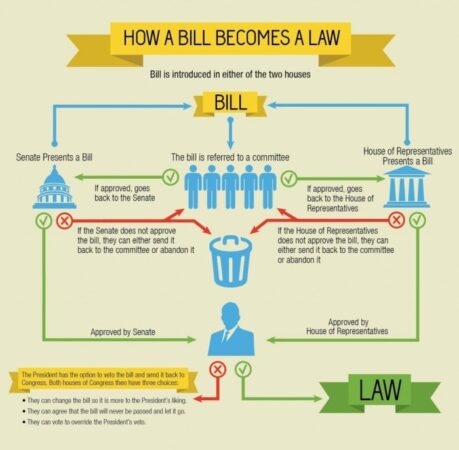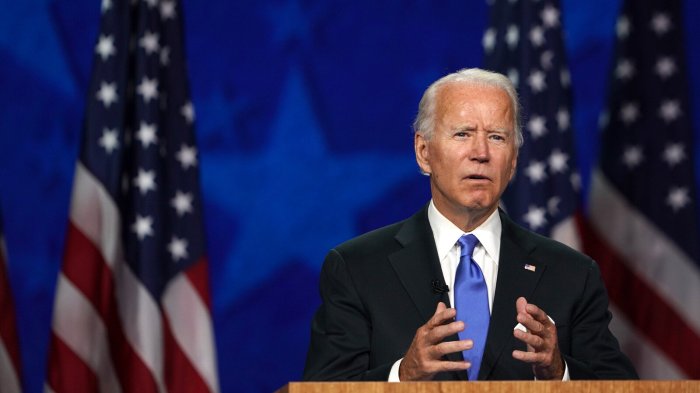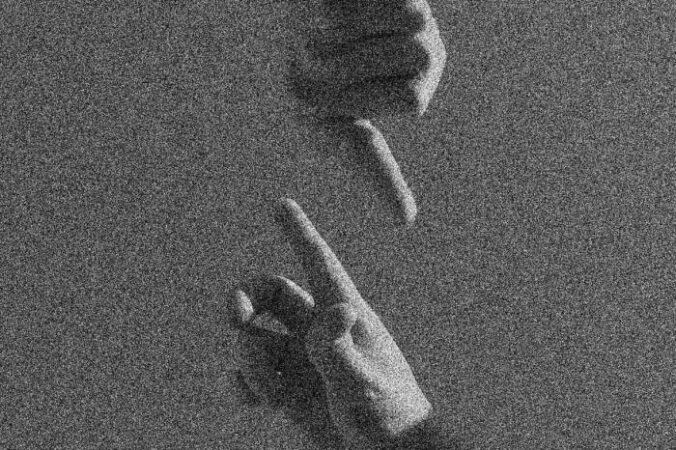
Does the President make laws? This question lies at the heart of the American system of government, a system built on a delicate balance of power. The President, as the head of the executive branch, wields significant influence over the legislative process, but the power to make laws ultimately rests with Congress. This intricate interplay between the President and Congress, enshrined in the Constitution, ensures a dynamic and complex system of governance.
The President’s role in lawmaking goes beyond simply signing or vetoing bills. The President can shape legislation through executive orders, public statements, and by working with Congress to build support for their agenda. This intricate dance of power, where the President’s influence is felt throughout the legislative process, is a fascinating and crucial aspect of American democracy.
The President’s Role in Lawmaking: Does The President Make Laws
The President of the United States plays a significant role in the legislative process, acting as a crucial check on the power of Congress. This role is defined by the Constitution, which establishes a system of checks and balances to prevent any one branch of government from becoming too powerful.
The President’s Veto Power
The President’s most direct influence on legislation comes through the power to veto bills passed by Congress. This power allows the President to reject a bill, preventing it from becoming law. A veto is a powerful tool that can be used to block legislation the President disagrees with, but it is not absolute. Congress can override a presidential veto with a two-thirds majority vote in both the House of Representatives and the Senate.
“Every Bill which shall have passed the House of Representatives and the Senate, shall, before it become a Law, be presented to the President of the United States: If he approve he shall sign it, but if not he shall return it, with his Objections to that House in which it shall have originated, who shall enter the Objections at large on their Journal, and proceed to reconsider it.” – Article I, Section 7 of the United States Constitution
The President’s Influence on Legislation
While the President’s veto power is a significant tool, it is not the only way the President can influence the legislative process. The President can also use executive orders to direct federal agencies to take specific actions, which can have the effect of shaping policy without requiring Congressional approval. Additionally, the President can use public statements and speeches to build public support for legislative proposals, making it more likely that Congress will pass them.
The President’s Role in the Legislative Process
The President’s role in the legislative process is multifaceted and involves more than just the power to veto. The President is often involved in the early stages of the legislative process, working with Congress to develop legislation that aligns with their priorities. The President may also use their political capital to build support for legislation they favor, encouraging members of Congress to vote for it.
The Separation of Powers

The United States Constitution establishes a system of checks and balances, dividing governmental authority among three distinct branches: the legislative, executive, and judicial. This separation of powers ensures no single branch can become too powerful, preventing tyranny and promoting a balance of authority. This principle is central to understanding the President’s role in lawmaking.
Powers of the President, Congress, and the Judiciary
The President, Congress, and the judiciary each possess unique powers that contribute to the lawmaking process.
- Congress is responsible for making laws. This includes initiating, debating, amending, and passing legislation. Congress also has the power to approve or reject presidential appointments and impeach and remove the President from office.
- The President has the power to sign bills into law or veto them. The President also enforces laws, directs the executive branch, and negotiates treaties with foreign nations.
- The judiciary interprets laws passed by Congress and signed by the President. This includes resolving disputes over the constitutionality of laws and ensuring they are applied fairly.
Constitutional Provisions Defining the President’s Lawmaking Role
The Constitution Artikels the President’s role in lawmaking in several articles.
- Article I, Section 7, Artikels the process for passing legislation, including the President’s power to veto bills.
- Article II, Section 3, states that the President “shall take Care that the Laws be faithfully executed.” This emphasizes the President’s responsibility to enforce laws passed by Congress.
- Article II, Section 2, grants the President the power to “make Treaties, provided two thirds of the Senators present concur.” This allows the President to engage in international agreements that can influence domestic law.
Historical Development of the President’s Lawmaking Authority
The President’s lawmaking authority has evolved over time, expanding beyond the explicit provisions in the Constitution.
- Early Presidents, like George Washington, exercised a more limited role in lawmaking, focusing primarily on enforcing laws passed by Congress. However, later Presidents, like Theodore Roosevelt and Woodrow Wilson, adopted a more assertive approach, advocating for specific legislation and using their public platform to influence public opinion.
- The development of the “bully pulpit”, a term coined by Theodore Roosevelt, refers to the President’s ability to use their position to influence public opinion and shape national discourse. This expanded the President’s power to influence legislation, even without formal legislative authority.
- The New Deal era under President Franklin D. Roosevelt saw a significant expansion of the President’s lawmaking power, as the government took on a more active role in addressing economic and social issues. This resulted in a greater reliance on executive orders and administrative regulations to implement policy.
The President’s Influence on Legislation
The President, while not directly involved in drafting legislation, wields significant influence over the legislative process. Their political agenda, public opinion, and the strength of their party in Congress all contribute to shaping the laws that are ultimately enacted.
The President’s Political Agenda and Public Opinion
The President’s political agenda, often Artikeld during their campaign and communicated through speeches and public appearances, plays a crucial role in influencing the legislative process. The President’s priorities and policy positions often shape the legislative agenda, with Congress often responding to the President’s calls for action.
For example, President Lyndon B. Johnson’s “Great Society” agenda, focused on social welfare and civil rights, led to the passage of landmark legislation like the Civil Rights Act of 1964 and the Medicare and Medicaid programs. Similarly, President Ronald Reagan’s economic policies, known as “Reaganomics,” influenced the passage of tax cuts and deregulation measures.
Public opinion can also influence the President’s ability to push their agenda through Congress. A President with strong public support is more likely to see their proposals gain traction and be enacted into law. For example, President Barack Obama’s Affordable Care Act, while facing significant opposition, was ultimately passed due to strong public support for healthcare reform.
The Role of the President’s Party in Congress, Does the president make laws
The President’s party affiliation and the composition of Congress play a critical role in the legislative process. A President with a majority of their party in both the House and Senate enjoys a significant advantage in passing legislation. They can rely on their party members to support their agenda, making it easier to overcome opposition and enact laws.
For example, President Bill Clinton, with Democratic majorities in both chambers of Congress, was able to pass significant legislation like the Family and Medical Leave Act and the North American Free Trade Agreement (NAFTA). However, a President facing a divided Congress, where the opposing party controls one or both chambers, faces significant challenges in passing legislation.
Executive Orders and Their Impact on Legislation
Executive orders are directives issued by the President that have the force of law and are used to implement policy and manage the executive branch. While not formally legislation, executive orders can have a significant impact on legislation by shaping policy in areas where Congress has not acted.
For example, President Franklin D. Roosevelt’s executive orders during the Great Depression established programs like the Civilian Conservation Corps and the Works Progress Administration, which provided employment and relief to millions of Americans. President Barack Obama’s executive orders on immigration, environmental protection, and healthcare reform also had a significant impact on policy.
However, executive orders are subject to legal challenges, and their effectiveness can be limited by Congress’s ability to overturn or restrict their implementation. For example, President Trump’s executive order on immigration was challenged in court and ultimately overturned.
The Impact of Presidential Lawmaking

The President’s role in lawmaking extends beyond simply signing or vetoing bills. The President’s actions, words, and proposals can significantly shape the legislative agenda and influence the outcomes of debates and legislation. This impact is multifaceted, influencing both the American political system and society at large.
Landmark Legislation and Long-Term Effects
Presidential lawmaking has left a lasting mark on American society through landmark legislation. These laws have addressed various societal issues, from civil rights to economic regulation, and their effects continue to resonate today.
- The Civil Rights Act of 1964, signed by President Lyndon B. Johnson, outlawed discrimination based on race, color, religion, sex, or national origin. This landmark legislation transformed the social landscape, paving the way for greater equality and opportunity for all Americans.
- The Clean Air Act of 1970, signed by President Richard Nixon, established national air quality standards and regulations to reduce pollution. This act has had a profound impact on public health, significantly improving air quality and reducing respiratory illnesses.
- The Affordable Care Act (ACA) of 2010, signed by President Barack Obama, expanded health insurance coverage to millions of Americans. This law has been credited with reducing the number of uninsured individuals and improving access to healthcare services.
Potential for Political Gridlock or Executive Overreach
While presidential lawmaking can lead to positive change, it also presents challenges. The potential for political gridlock and executive overreach is a constant concern.
- When a president faces a divided Congress, it can lead to legislative gridlock. This can occur when opposing parties hold different views on policy priorities, resulting in stalled or delayed legislation.
- Executive overreach arises when a president attempts to expand their power beyond constitutional limits. This can manifest in actions such as issuing executive orders that bypass Congress or circumventing legislative processes.
Summary

The President’s power to make laws is a multifaceted topic that has evolved over time. Understanding the President’s role in the legislative process, the separation of powers, and the historical development of presidential lawmaking authority is essential for comprehending the complexities of American governance. As we navigate the challenges of a modern democracy, the interplay between the President and Congress continues to shape the direction of our nation.
Essential Questionnaire
Can the President create laws without Congress?
While the President can issue executive orders, these are not laws. They are directives that carry the force of law within the executive branch but are subject to judicial review. To enact laws, the President needs to work with Congress.
What happens if the President vetoes a bill?
Congress can override a presidential veto with a two-thirds majority vote in both the House and Senate. This process is rarely successful, but it demonstrates Congress’s ability to check the President’s power.
How does the President influence legislation?
The President can influence legislation through various means, including public statements, lobbying Congress, and using the power of the bully pulpit to build public support for their agenda.
What are some examples of landmark legislation passed during different presidencies?
Examples include the Civil Rights Act of 1964 (President Lyndon B. Johnson), the Clean Air Act (President Richard Nixon), and the Affordable Care Act (President Barack Obama). These laws have had significant and lasting impacts on American society.
